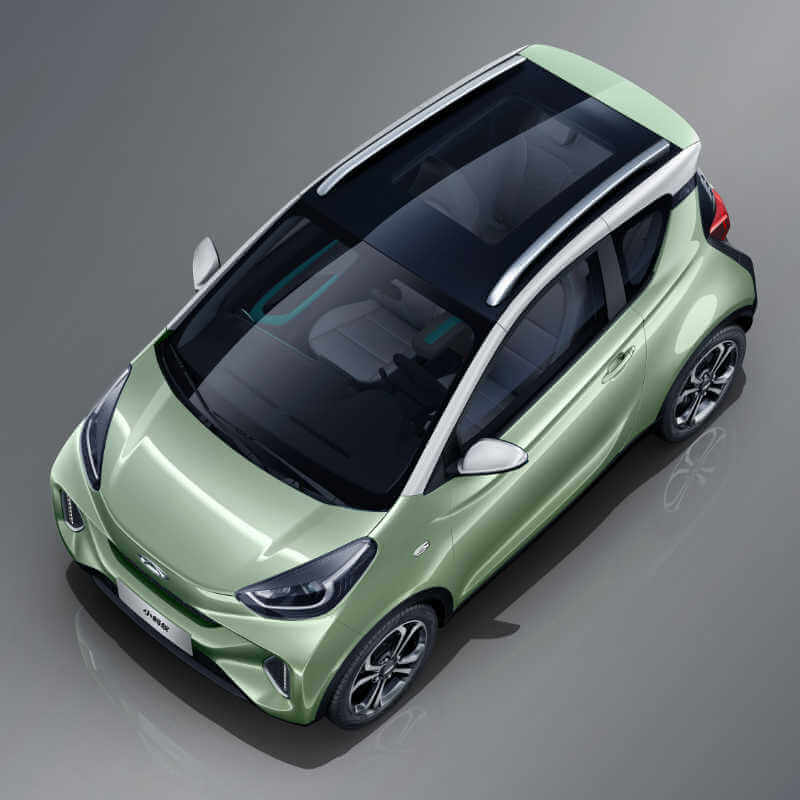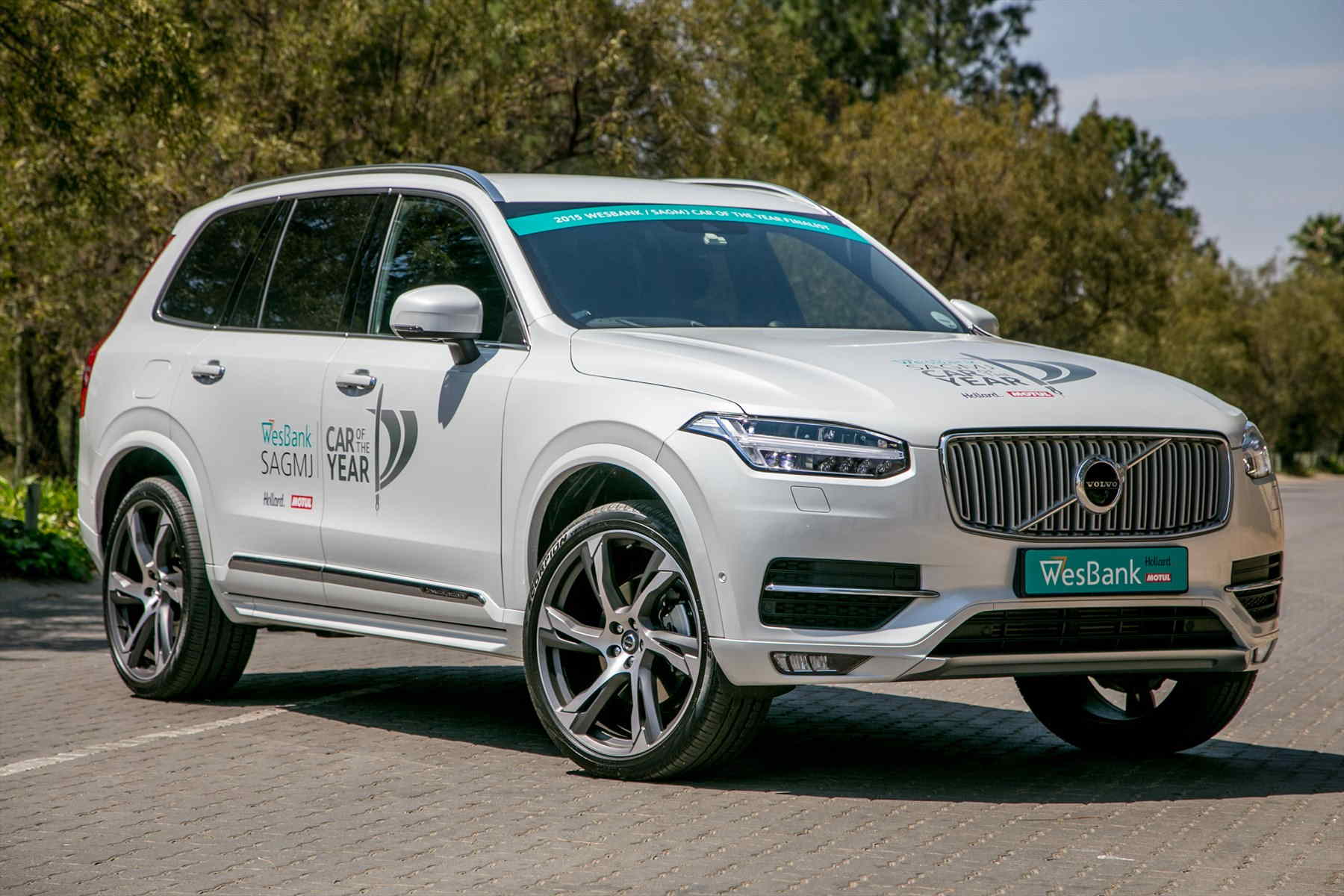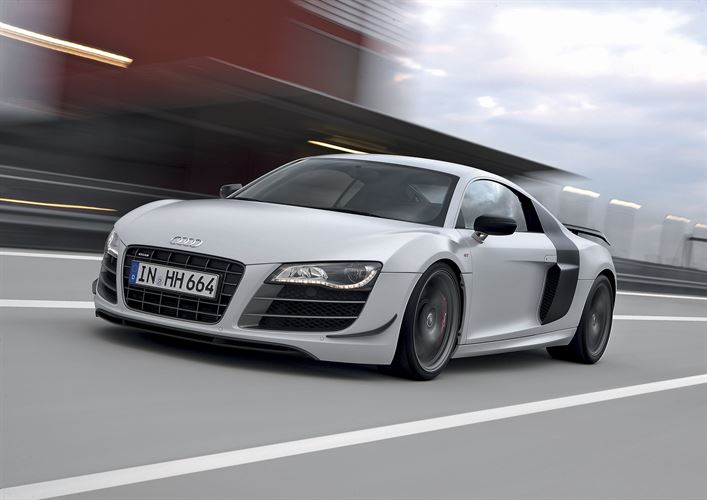All-new i20 brings an attractive, fun to drive hatchback to competitive B segment
Hyundai is ready to make its presence felt even more in the very competitive B-segment of the South African automotive market with an all-new i20 hatchback – one of the bestsellers in its local range, and a car that comes packed with features at a very attractive price.
The all-new i20, designed at Hyundai Motor Company’s European Technical Centre in Rüsselsheim, Germany, made its debut at the 2013 Paris Motor Show and has already received international accolades for its fresh looks and neat design lines. The new model makes its entry in South Africa in three derivatives: The i20 1.2 Motion (manual); the i20 1.4 Fluid (manual); and the i20 Fluid equipped with an automatic 4-speed gearbox.
The new i20 has been fitted on a new platform with a wheelbase that is 45 mm longer at 2,57 m, creating more space for the occupants. It is a true five-seater hatchback, with a very useful boot capacity of 294 litres that makes it a really versatile vehicle.
“The new i20 does not only look fresh from the outside, with its clean and exciting lines, but the interior reflects a feeling of luxury and excellent ergonomic design. Customers are also in for a pleasant surprise when they take this new model in our stable for a test drive: The engineers have done a fine job of creating a car with solid, surefooted dynamics on the road, and a well-tuned, direct steering setup that gives good feedback,” says Stanley Anderson, marketing director of Hyundai Automotive South Africa.
The new i20’s driving experience has been fine-tuned to ensure suitability for European roads following rigorous ride and handling testing in alpine mountain areas, hot summer evaluation in southern Europe and cold winter testing in Scandinavia. The i20 was tested at altitudes as high as 2 500 m and subjected to temperatures ranging from 40ºC down to –35ºC.
The extensive use of lightweight high-strength steel in the platform and bodyshell has yielded a reduction in core weight of the vehicle. Even though the exterior dimensions grew, the new i20 is still among the lightest vehicles in the segment. Furthermore, a significant improvement in torsional rigidity could be achieved, reducing vibrations when on the move and aiding handling performance.
Styling and design
The original i20 was one of Hyundai Motor’s first truly European vehicles, designed, developed and built in the region. It later featured a progressive design and hexagonal grille that became a hallmark of Hyundai design.
The distinctive design of the new i20 at Hyundai Motor’s Design Centre Europe in Rüsselsheim, Germany, was influenced by the latest interpretation of Hyundai Motor’s design philosophy, Fluidic Sculpture 2.0, with the clean and elegant lines giving it a sophisticated appearance.
With a larger platform than its predecessor, the wheelbase of the new i20 is 45 mm longer (now 2 570 mm) than the outgoing model, meaning the wheels are closer to each corner. The European design team paid particular attention to achieving balanced proportions, with the generous shape and long hood creating a powerful stance.
Compared to its predecessor, the new i20 is also wider. The width has increased by 24 mm (overall 1 734 mm) making it one of the widest cars in its class. The overhangs at the front have been shortened to communicate the dynamic qualities of the driver experience.
The bodyshell incorporates a single feature line running the length of the vehicle just below the windows and connecting at the rear. A waistline moulding at the base of the door creates a sleek profile, which is complemented by the soft, sculptured “undercuts” of the body panels.
The European team has created a bold front aesthetic that now features a distinctive dual-element grille. The upright chrome-framed hexagonal grille has been lowered for design and engineering purposes, while a thin, horizontal grille connecting the headlamps, emphasises the width of the vehicle. Reinforcing the vehicle’s purposeful stance, the wheel arches subtly flow into the long hood.
In the new i20, the A-pillars are thinner, shorter and more upright, achieved via the use of advanced high-strength steel. The redesigned pillar creates more interior space for occupants as well as enhancing the driver’s field of vision, making exiting junctions safer and manoeuvring in tight city spaces easier.
At the rear, the new i20 features a wrap-around, gloss-finished black C-pillar which gives the impression of a floating roofline. The feature line that runs the length of the vehicle connects at the rear – dropping subtly below the rear window to improve visibility. The lamp clusters wrap around the rear wing into the trunk lid and feature a distinctive “boomerang” LED design.
“The bold and distinctive volume of the new i20 gives the car a unique personality, which is underlined by the premium look of the headlamps and rear combi lamps. For example, the concave element below the rear lamp expresses the three-dimensional and sculptural aspect of the Hyundai design language,” says Thomas Bürkle, chief designer at Hyundai Motor’s Design Centre in Europe.
The purposeful appearance of the new i20 is emphasised by its long hood, low roofline and sharp crease line that combine to achieve a streamlined vehicle with an aerodynamic drag figure of 0,34 Cd.
At the rear, the new i20 features a large tailgate for ease of loading into its generous boot space of 294 litres, with a convenient wide boot opening. The reverse lamp has been integrated into the rear bumper – a first for Hyundai. This was done purely for design factors, allowing greater styling flexibility within the rear LED lamp cluster.
All of the new i20’s key surfaces are colour coded to provide a connected and premium feel for the interior space. Each interior colour took inspiration from everyday items, giving each its own distinctive character. The colours have been designed to create an elegant and calm interior environment, with the colour blocks throughout the cabin visible from the outside and complementing the exterior colour.
A coloured inlay that runs the full width of the dashboard and around the handle on the door emphasises the width and available space, giving the cabin a brighter feel. It encompasses the redesigned air vents, which overhang the dashboard into the doors, that have been shaped specifically to provide better air flow into and around the cabin.
Hyundai Motor’s ergonomics team worked to produce “functional clustering” of the key technologies, grouping together instrumentation such as the audio, heating and ventilation, and powered window systems, to yield a cleaner cabin visual.
Comfort and convenience
With a large cabin and a generous list of standard technologies, the new i20 offers a sophisticated and luxurious occupant environment that will appeal to a young audience.
The new, larger platform on which the new i20 is based, provides greater interior space to match the sophisticated look.
Thanks to its increased dimensions and ergonomic cabin packaging, the new i20 is one of the most competitive cars in its class for interior spaciousness. The new i20 offers combined front and rear legroom of 1 897 mm, a class-leading figure. Despite its lower roofline, the more substantial footprint and lower seat position enhance interior dimensions, allowing five adults to travel in comfort.
Compared with the previous model, front-seat occupants enjoy 1 027 mm headroom (22 mm more than the previous model) and 1 084 mm legroom (10 mm more). In the rear of the cabin, headroom of 968 mm, legroom of 813 mm and shoulder room of 1 350 mm allow three adults to be seated in comfort. Additional legroom was created in the front by raising the height of the dashboard and moving the glovebox and surrounding components forward – made possible due to the longer hood.
Cargo capacity has also been enhanced, making the vehicle one of the most accommodating in the segment with a trunk volume of 294 litres with the rear seats upright.
Thanks to clever packaging, the rear bench can fold fully flat, meaning trunk capacity is boosted to 1 010 litres with the rear seats folded – ideal for young families and those carrying larger items.
Front-seat occupants benefit from larger cup holders in the centre console and a 1,5-litre bottle storage in the doors as well as a centre console box, greatly enhancing secure storage space. Rear doors feature a 1,0-litre bottle storage space. The driver and front-seat passenger can also make use of a roof-mounted sunglasses holder.
One of the key goals for the design team was to ensure the new i20’s perceived interior quality was among the very best in the segment. The cabin has undergone extensive ergonomic testing to ensure it is easy and pleasant to use, while retaining a sense of premium quality. The dashboard is asymmetric, angled five degrees towards the driver to make it as practical and user-friendly as possible, though it appears symmetrical to occupants.
Hyundai Motor’s engineers and designers have selected a number of high-quality, high-durability materials to ensure the cabin provides lasting comfort and good looks.
On many of the cabin’s key surfaces a high-grade Thermal Plastic Olefin (TPO) material has been applied, including on the vehicle’s dashboard and door trims. The soft-to-the-touch material is highly durable, maintaining a premium look and feel even after frequent use.
“The dash and the door materials are the first a potential customer touches after the steering wheel, so these need to be good quality and, most importantly, soft,” commented Christian Löer, head of product management and pricing at Hyundai Motor Europe.
Hyundai Motor has, for the first time equipped the cabin with subtle piano black inserts, in addition to chrome detailing around the air vents and gear shift lever to create a modern and sophisticated interior package. The piano black and chrome finishes continue around the start/stop button, audio and HVAC unit controls.
The new platform and generous shape of the New i20 have been developed using more lightweight, high-strength steel to yield stiffer torsional rigidity. The result is an improvement in ride quality, reduction in core weight and gains in damping to mitigate noise, vibration and harshness (NVH).
The body structure is composed of 42% lightweight, ultra high-strength steel, compared with 16% in the outgoing model. Together with reinforcing loops fitted to the B- and C-pillars and the tailgate opening, this raises torsional rigidity by 81%.
Throughout the new model, Hyundai engineers have applied technologies aimed at reducing the intrusion of noise and vibration to the cabin. Increased sound-absorption at the base of the A-, B- and C-pillars protects occupants from road vibrations, while a high-density anti-noise pad is fitted within the floor pan to limit noise ingress. Hyundai has equipped the new i20 with an improved, low-frequency ISO PAD behind the dashboard, which helps reduce engine noise within the cabin.
In the pursuit of a quieter interior, the new i20’s external mirrors have been designed to improve airflow. Additionally, by fitting an inner belt to the door frame, Hyundai engineers have ensured a tighter close between it and the B-pillar, removing possible air interruption and, therefore, wind noise.
Other new features include automatic folding door mirrors and smartphone docking integration. USB and auxiliary connectivity is fitted as standard with an audio system, along with a Bluetooth hands free phone function and the ability to stream music over the sound system with Bluetooth from a cell phone or music player.
Engines and transmission
Hyundai’s European engineering team, based at the Technical Centre in Rüsselsheim, Germany, focused on developing powertrains to better suit the demands of buyers. Hyundai engineers tuned each unit to deliver more maximum and low-end torque, enabling a more accessible and responsive day-to-day driving experience.
The new i20 is available with a choice of two Hyundai “Kappa” petrol power plants: A 1 197 cc 4-cylinder and a 1 368 cc four cylinder engine, both with 4 valves per cylinder and Dual Continuous Variable Valve Timing. Both engines uses returnless multi-point electronic fuel injection.
The Kappa 1,4 litre engine in the new i20 1.4 Fluid manual and 1.4 Fluid automatic delivers maximum power of 74 kW at 6 000 r/min., with the torque output reaching its limit at 133 Nm, delivered at 3 500 r/min. In the new i20 1.2 Motion manual, equipped with the 1,2 litre engine, maximum power of 61 kW is delivered at 4 000 r/min., and maximum torque of 115 Nm at 4 000 r/min.
The more powerful 1,4 litre engine in the i20 Fluid manual and 1.4 Fluid automatic is mated to a six-speed manual gearbox and four-speed automatic gearbox, and the new i20 1.2 Motion manual uses a five-speed manual gearbox.
The five-and six-speed manual transmissions fitted to the new i20 have been extensively tested to deliver a smoother, quieter and more tactile shift, in keeping with the other quality enhancements made for the model. The transmissions now feature multi-cone synchroniser rings on the first two ratios, a carbon-coated synchroniser ring on ratio three, and an anti-vibration mechanism fitted to the reverse gear to prevent ‘grinding’ noise and feel. Shift accuracy and snap-in feel has been improved with the addition of a guide plate inserted in the control shaft coupling.
Running gear
Using the company’s large engineering and testing presence Europe, Hyundai Motor tuned every element of the new i20 to optimise ride and handling characteristics for European roads, which is also the preferred setup of most South African drivers.
The new i20 sits on fully independent MacPherson strut suspension at the front and semi-independent coupled torsion beam axle at the rear. Hyundai’s engineers have upgraded the two systems to exploit the new car’s larger footprint, its significantly stronger structure and altered weight distribution.
The 64% stiffer bodyshell, combined with its longer wheelbase (+45 mm) and increased tracks offer noticeable gains in cornering stability and grip.
The new i20 employs a permanently magnetised Brushless Alternating Current (BLAC) motor-driven power steering (MDPS) system for greater accuracy and operating range. The steering system requires 2,7 turns lock-to-lock for a 5,1 m turning radius – making the car easy to navigate around the urban environment.
The front suspension employs a new shock absorber valve system, which harmonises ride and handling, giving a smoother ride and decreasing noise vibration and harshness. At the rear, the wheel-arch cavities and floor pan have been redesigned to accommodate long-travel shock absorbers, which are mounted vertically. This setup greatly reduces friction, resulting in greater wheel control and handling, a better response to the driver and also improved ride quality, benefitting occupant comfort. These enhancements mean that the ride of the new i20 is smoother compared to the previous model, while handling and responsiveness is increased.
Safety
The latest generation of Hyundai cars have been engineered from the earliest stages with occupant and pedestrian safety as a key priority. Hyundai engineers have rigorously tested and developed the passive and active safety systems.
At the core of the new i20, safeguarding above-average impact resistance, is the stronger chassis and bodyshell, which benefits from the extensive use of advanced-high-strength steel (42% of total composition compared with 16% for the original i20).
Every new i20 model is fitted, as standard, with a 4-wheel electronic 4-channel Anti-lock Brake System (ABS), as well as Electronic Brake Force Distribution (EBD). Ventilated disc brakes are used on the front wheels, while the rear wheels are equipped with solid discs for the brakes.
The application of brake tie rods within the brake booster provides a number of benefits to customers: improved braking strength, better braking stability, increased brake pedal feel and a reduction in ambient vibration.
The new i20 features effective passive safety equipment to protect occupants, including a driver and front passenger airbag, with front and rear seatbelt pre-tensioners and a lap belt for the middle passenger in the rear. The height-adjustable head restraints provide protection against whiplash.
Pricing
The prices of the new i20 model range are:
• 1.2 Motion Manual R184900
• i20 1.4 Fluid Manual R204900
• i20 1.4 Fluid Automatic R214900
Included in the prices are the Hyundai Warranty and Roadside Assistance for 5 years or 150 000 km.
A 2 year or 30 000 km Service Plan is included in the 1.2 Motion’s price, while the 1.4 Fluid derivatives include a 3 year or 60 000 km Service Plan.







